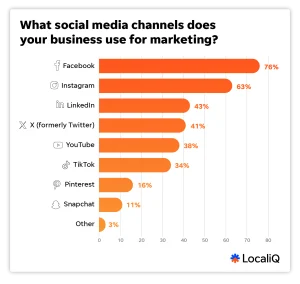You’re not broaching a dark secret of the industry, because TV has always been a digital receiver, taking inputs and converting them to coloured pixels for output. The television was a digital computer monitor long before any of us were born. TV was a bad monitor for your computer before it was a good monitor for you Theoretically at least, your television could be a monitor for your computer, although not a very good one.
TVs often have lower pixel densities than monitors and can so end up showing mages blurred when viewed up close, so sit back further to avoid the eyestrain – and avoid having to wear strain relief glasses.
How to Connect
The best way depends on the equipment you have. You can hook up your TV to a computer in several ways, but the easiest and most efficient way is with HDMI cables. This will get your PC to adjust its knobs and dials to match your TV set, so that the video being sent out of your computer matches up with the resolution (number of pixels) and frame rate (refresh speed of those pixels) specs of the screen.
Whether modern televisions support audio input or not will depend on your television model as well as the type of audio input cable being used. Check the user manual to find out what kind of audio cable inputs are available on your television device, and see if they are compatible with the audio set-up you have at home.
When a connection is made, it can be set so Windows or macOS users change their desktop resolution and layout to best match the new screen: wires are always preferable, because this reduces lag, and TVs often have comparably lower refresh rates to monitors that result in blurring and ‘tearing’ of images. It also bears remembering that TVs are intended to be watched at distances greater than a few metres, which means they have reduced densities of pixels, making text harder to read.
Resolution
It’s perhaps technically fine, but it might not always be in your best interest to use a TV as your monitor. Probably the biggest disadvantage is that the average TV will not provide as good a colour reproduction (ie, the way the colours are displayed on your monitor) as the average monitor. While working in graphic design or photo editing, this is of huge importance. You can calibrate your TV, and over time it will get better and better at reproducing colours accurately, but it very rarely ends up being as good as a monitor.
One of them is lower pixel density. Smaller pixels are positioned closer together, which means that when you see a picture on your screen, it might look sharper. If reading long stretches of text is part of your daily work life, you might want to avoid a TV. This will become especially true for those work settings where text reading is essential.
If you are planning to attach a television screen as your computer monitor, make sure that it has a resolution of at least 1080p and enough viewing angle that you will be able to read the contents of that screen from different angles.
Brightness
TV’s brightness settings are typically calibrated for larger viewing distances, and higher pixel densities, so text and images might be less crisp. Television brightness sensors would also degrade the TV’s image quality in low light settings or when used as a computer monitor.
However, even though modern plasma and LCD TVs could go very bright, when you use them as a monitor you should not set the brightness too high for you eyes, or start to strain and the image also degrade itself, also you cannot increase the contrast level too much as some of the content require brightness levels that the TV cannot handle.
You can display your computer’s screen onto your TV with screen casting devices such as Chromecast, but for a lag-free broadcast like I would suggest, you want to go the wired route to ensure that your picture is steady.
Contrast
While putting a TV to work as a computer screen would appear to be a great deal, it might not be the optimal arrangement. Monitors, when used up close, have pixel densities that work beautifully with text and imagery, while TVs usually project an image with a more balanced colour rendition at greater distances from the screen.
They also generally support a lower refresh rate and a larger number of pixels compared with a computer monitor, which is why your writing might seem fuzzy on one acting as a computer monitor. Plus, many TVs are known for having extremely high input lag, which can slow down the response times of your mouse or trackpad.
Now that mainstream, over-the-air TVs contain huge leaps in resolution, input lag and more, they are also decent choices for computer monitors. But before you pull the trigger, you will still need to figure out which is a monitor and which is a television. And now there is another wrinkle – with the introduction of OLED TVs that provide intensely deep blacks for substantial dynamic range, it might be the perfect time to consider two TVs in your living room so that you can correctly use your lower-end, low-spec offerings as monitors.
Can You Use a TV As a Computer Monitor?






More Stories
Gadgets Supporting Digital Wellness and Screen Time Management
Smart Home Automation for Renters and Temporary Setups
Sustainable and Eco-Friendly Gadgets for Everyday Use